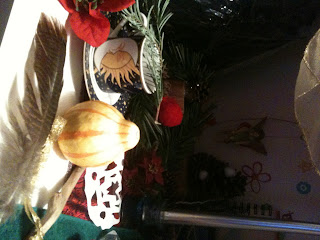The Celtic name for this month is "Beth", pronounced "beh", and celebrates the Birch tree. Birch is a broad-leafed hardwood of the genus
Betula, and is in the same family as Alder, Hazel, and Hornbeam (the first two of which are other sacred trees to the Celts). Birch trees and shrubs tend to be of a medium size, with small samara fruit. They are typically found in well-drained, often acidic, soils, and are considered a pioneer species, meaning that they are often the first trees to return after a fire or other disaster.
Folklore surrounding the Birch is plentiful. In Gaelic legend, the Birch is closely associated with Tir na Nog, the Otherworld of the faeries and the Sidhe. To the Celts, brooms, or besoms, made of birch had a purifying quality and were used to drive away evil spirits. During handfasting rituals, the couple would jump over a broom made of Birch; for a long time, the "besom wedding" was legal. Birch were also used in Beltane celebrations as a living maypole - as one of the first trees to grow leaves in the spring, the Birch is an obvious symbol of fertility. The spring goddess Eostre, from whose name comes both "Easter" and "Ostara", was associated with the Birch, as was Frigga, Thor, and Freya from the Norse pantheon. Siberian shamans make their own use of the Birch, notching a Birch twig nine times during an initiation rite to represent the nine steps to heaven. In North America, some Native Americans prized Birch for its practicality in canoe and paper making, and also used the bark to ritually wrap their dead.
Magickally speaking, many cues can be taken from the Birch tree's mythological background - today, wood and leaves from the tree can still be used to make besoms, to ward negativity, and for aid in love. Birch can be burned at Samhain, Beltane, and Yule, and can form the traditional Yule log and Maypole. The wood can likewise be used in dealings with faeries and nature spirits, whether to call the friendly ones or banish the not-so-friendly ones.
Both the leaves and the inner bark of the tree are edible; either can be eaten raw. The inner bark can be added to soup, or can be ground and used as a flour. Made into a tea, it is diuretic, can help cure other minor illnesses, like fever, and makes a good antiseptic. The leaves have similar properties. Birch sap is also edible, and though it is infrequently tapped (it's less sweet than maple sap), it can be turned into a molasses-like syrup or be fermented into beer or vinegar.









